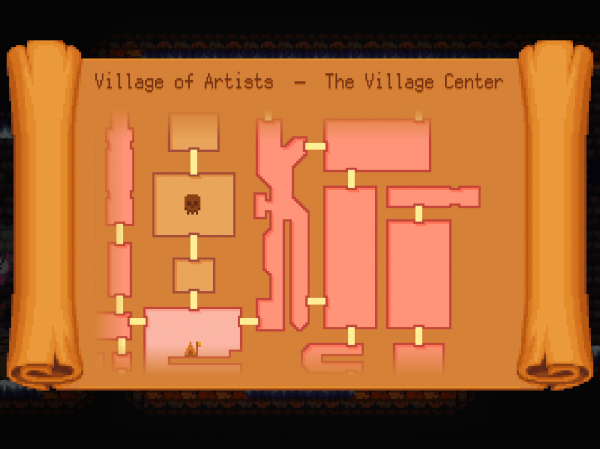Dandara is a Metroidvania-style game with a unique movement mechanic. Instead of walking around environments to discover new tools that let you explore even further into the game, you play as a character that can only jump between patches of salt in the environment to move around. It’s a neat idea, but it also creates a series of design challenges that end up getting addressed in disappointing and irritating ways, ultimately making Dandara a pretty lackluster experience.

Jump around
In Dandara, you take control of a heroine with the same name who is trying to save the world of Salt from falling into chaos. The way you do this is by jumping through various environments, discovering and unlocking new powers, and taking down and enemies that stand in your way.
Dandara is setup exactly like any typical Metroidvania game, with a large map of interconnected rooms that are sprinkled with items that allow you to access more and more of these rooms over time. The only real difference here is that Dandara doesn’t move the way most characters in Metroidvanias move. In this game, your character can only jump between pre-determined patches of salt spread throughout the game, making traversal feel like a long series of wall jumps instead of more typical platforming movement.
Platforming puzzles
The restrictions on movement don’t just make controlling Dandara feel different, it changes almost everything about the game completely. Enemy and puzzle designs in this game are all built around the idea that Dandara can only jump between platforms, and its pretty apparent that a lot of creativity went into building unique challenges around these movement mechanics.
The only problem with all of this though is that none of it necessarily feels great. Jumping between platforms to get through rooms quickly grows tedious, and the game builds in most of its challenge by limiting your jumping options while trying to overwhelm you with projectiles. There are moments where the movement and combat gel together to create some satisfying experiences, but the majority of the time, playing Dandara feels like a chore.
Directionless Dandara
On top of not feeling mechanically satisfying, Dandara is also a supremely disorienting game. Being able to jump on walls and ceilings can make it tough to know what direction you’re heading in, and this gets compounded by the fact that Dandara routinely reorients your camera view while playing.
This wouldn’t be a huge issue if Dandara sported a map interface that could let you pause the action and get your bearings. Unfortunately though, this is not the case. Dandara’s map interface doesn’t tell you where you are and doesn’t reorient with camera shifts. In addition, it provides shapes of rooms and exits that aren’t entirely accurate and—to top it off—doesn’t pause the action when you pull it up. This makes pathfinding in Dandara needlessly difficult in a game that already makes it hard enough to get around.
The bottom line
Dandara is worth applauding for its ambition and commitment to unique traversal mechanics, but that’s about it. There are moments where you can see how all of its moving pieces should fit together, but those moments are few and far between. The rest of the experience is confusing and not particularly fun, so if you’re looking for a new Metroidvania to play, I wouldn’t recommend this one.
PocketGamer.com
AppSpy.com
148Apps.com
PocketGamer.fr
PocketGamer.biz
PCGamesInsider.biz
The Sims News
PocketGamer.fun
BlockchainGamer.biz
PG Connects
BigIndiePitch.com
MobileGamesAwards.com
 U.GG
U.GG
 Icy Veins
Icy Veins
The Sims Resource
Fantasy Football Scout
GameKnot
Addicting Games
 Arcade Cloud
Arcade Cloud
 Wisecrack
Wisecrack
 EV.IO
EV.IO
Luminosity



